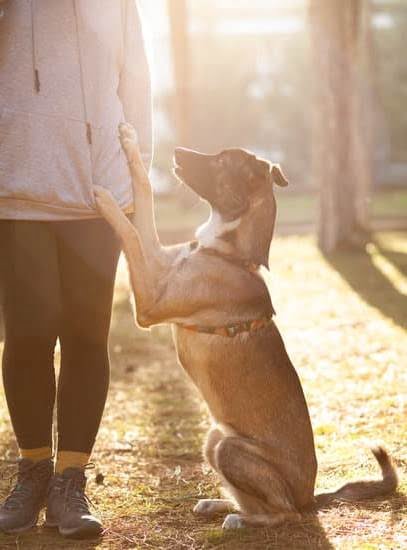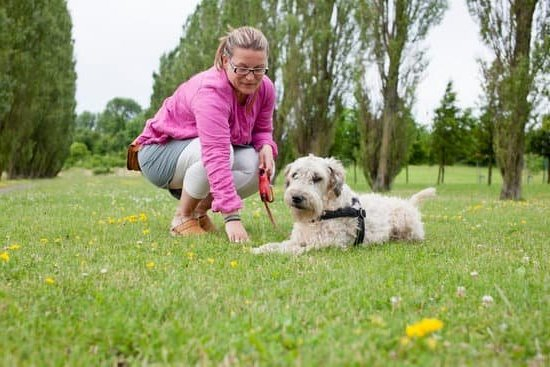Introduction
Explosive dogs are dogs that display anxious or aggressive behavior due to fear, overexcitement, or frustration. While this behavior is understandable and natural for canines, it can pose a safety risk to both the dog and their handlers. Potential causes of explosive behavior in dogs include unresolved trauma from prior interactions, poor socialization and training, as well as improperly managed nutrition and exercise.
To help with their explosive behavior, these dogs need proper guidance and rehabilitation. Training these explosive canines takes patience and consistency so they can learn new behaviors without experiencing stress or anxiety. However, it’s important to note that not all professional trainers have the necessary skill set to do this kind of work successfully; therefore, one must choose a certified trainer who has had experience working with this type of animal before beginning any form of therapy.
The main objective in training explosive dogs is teaching commands that redirect negative feelings or behaviors in a constructive manner. These commands should be consistent and help redirect the dog’s unfocused energy without instilling fear or triggering unwanted reactions. Positive reinforcement is also key when teaching new commands – reward-based methods such as treats or verbal praises are best for creating positive reinforcement for desired behaviors amongst them. Additionally, having structure and consistency during training sessions helps keep the dogs focused on tasks rather than triggering unwanted reactions due to unpredictability or changes in environment/routine. Desensitization programs are also an option for these animals – introducing potentially uncomfortable stimuli at small doses over time may allow the animal to become familiar enough with said stimuli that it will no longer produce a negative reaction from them when interacted with in small quantities.
Reasons Why Dogs Become Explosive
There are many behavioral and environmental triggers that can lead to the development of explosive tendencies in dogs. For example, a lack of early socialization or exposure to intimidating environments such as large crowds, unfamiliar sights and sounds can cause anxiety in dogs which may lead to aggressive behavior. Additionally, pet owners not providing adequate exercise for their animals, not implementing structure or rules into the animals’ lives, or not providing enough mental stimulation can all contribute to the development of an overly stressed animal.
The training process for explosive dogs requires patience, consistency and positive reinforcement techniques. While desensitization therapy is beneficial in getting a dog used to perceived stressors, such as loud noises and crowds, rewarding positive behaviors and discouraging negative ones is key to maintaining long-term success. It is also important to provide plenty of mental stimulation by participating in activities such as agility courses and clicker training. In addition, pet owners should ensure that the dog has ample exercise so they do not become restless or bored which can lead to challenging behaviors. Finally, ensuring that expectations are realistic and sticking with them will help build trust between the animal and human over time.
The Benefits of Training Explosive Dogs
Training explosive dogs requires a different approach than traditional obedience training. This is because these dogs are often reactive – responding quickly and intensely to things that frighten or otherwise concern them, whether it be loud noises, unfamiliar people or other animals. A proactive approach to training can help both the dog and owner learn strategies for managing anxiety and fear-related aggression, which in turn can improve the quality of life for both.
For example, desensitization, counter-conditioning and threshold training can all be useful tools in helping an explosive dog become less easily overwhelmed when faced with situations they typically find more difficult to handle. Desensitization involves gradually exposing a dog to a trigger in a low stress context until they no longer feel threatened by it; Counter-conditioning helps replace negative responses with positive ones; And threshold training sets boundaries in advance so the owner knows when their pet might become overexcited or overly defensive before these emotions escalate into unmanageable aggression or destruction.
Furthermore, teaching your pet coping mechanisms can also be very beneficial in helping an explosive dog become better adjusted in new environments. Activities like relaxation exercises (such as “happy place”) can help them stay calm during moments of high stress, while focusing exercises such as nose work games help them practice self control in distracting scenarios. These activities provide an outlet for nervous energy that would otherwise be directed inward. Additionally, exercise – especially interactive resource motivated activities such as flyball or agility trials – are great ways for dogs to blow off steam while learning impulse control and social manners surrounding other dogs and humans at the same time.
The Training Process for Explosive Dogs
The training process for explosive dogs starts with introducing structure, routine and consistency. This can be done by implementing boundaries, rules and expectations that are consistently enforced. During the training process, it is important to create a positive environment so the dog can more comfortably learn how to act socially around other people and animals. To do this owners should make sure remove potential triggers from the environment, such as loud noises or overly active children that may frighten the dog.
In addition to setting up an ideal learning environment, owners must engage in daily obedience training with their pet. This will involve teaching accepted commands such as sit, stay and come when called – all of which require a great deal of patience as explosive dogs will not adapt quickly or easily to changes in their behaviours. Furthermore, reward-based systems have been found to have greater success than punishment-based ones when it comes to training explosive dogs; offering treats or toys during training sessions can help them better associate continuing behaviour with desired rewards rather than punishment or unpleasantness.
Finally, owners should create regular exercise programs for these dogs involving walks or playtime in spacious safe areas away from distractions so they can interact more naturally with their environment without overexerting themselves. Overall it is important for owners of explosive dogs to incorporate structure, routine and consistency into every aspect of their pet’s life in order for them to better understand how to establish appropriate behaviours within a social context.
Establishing a Positive Relationship Between Dog and Owner
One of the most important steps in training explosive dogs is to first establish a positive relationship between dog and owner. This means developing mutual respect and trust between the two. Owners should ensure they adopt a leadership role with the animal, making sure it understands you are the apex of its social environment. This is done through regular exercises such as consistent commands and commands-and-reward systems, such as offering treats or praise after completing an activity correctly. Additionally, ensuring that your pet feels safe when interacting with you is key; this could take form of gentle physical contact like strokes or playtime activities that strengthen bonds further. Taking regular walks together will help both of you better understand one another, increasing communication whilst providing mental stimulation for the animal. It is also worth noting that patience is paramount when it comes to training explosive dogs; positive reinforcement will be much more likely to produce results than sudden outbursts or punishment in any form.
Assessing and Addressing Dog Aggression
Training a dog can be an incredibly rewarding process, but it can often be difficult to know what techniques to use. This becomes especially true when it comes to explosive dogs with aggression issues. In order to effectively address aggressive dogs, it is important for owners to understand the underlying cause of the aggression and develop a tailored treatment plan.
Knowing why a dog has become aggressive is key in determining how best to work with the animal. A professional dog behaviourist may be able to help in assessing such cases so that owners can gain an understanding of the issue they’re dealing with before looking at training methods. Once the trigger or root of the aggression is better understood, then owners can make progress through supporting their pet through appropriate exercise and introducing humane approaches that gently increase socialisation with other animals and people as needed.
Positive reinforcement and reward-based training are typically recommended methods for implementing set boundaries and expectations around behaviour. Through gradual conditioning based on trust, respect, communication and bond-building activities, positive training practices will help reduce feelings of fear or anxiety which underlie most episodes of misbehaviour in dogs. An experienced trainer should always be consulted on how best to reinforce desired desirable behaviours using established training tools and methods like verbal cues, tug toys, clickers or touch-training collars – all designed to ensure care and respect while still setting boundaries.
The Benefits of Using Positive Reinforcement
Positive reinforcement is an invaluable tool for training explosive dogs. This method involves the use of rewards to encourage desired behaviors. As a result, an animal is more likely to understand what behavior is expected of them and will be more likely to perform these behaviors in the future.
Some of the benefits associated with using positive reinforcement with explosive dogs include improved communication and understanding between human/canine pairs, enhanced obedience, better relationship development, and more enthusiasm when performing desired tasks or activities. The rewards can be anything from treats, toys or verbal praise and should always be given immediately after the desired behavior is performed.
Of course, there are pros and cons to using this particular method of reward-based training when dealing with explosive dogs. On the plus side, it has been proven to effectively reduce challenging behaviors such as barking and aggression. On the downside though, high value treats may not always work to interrupt or stop unwanted behavior from occurring in explosive dogs – in some cases this incentive can even cause them to become aroused further! This means pet owners must exercise caution when using positive reinforcement methods for these rambunctious animals. Additionally, consistent repetition is essential for successful results – it take a considerable amount of effort and patience on the part of the owner to see any lasting effects from this type of training method.
Avoiding The Potential Pitfalls of Training Explosive Dogs
Explosive dog behavior can be startling and dangerous if it isn’t properly prepared for, so training is essential. A successful training program requires an in-depth assessment of the dog and their environment, identifying and addressing potential triggers, carefully introducing desensitization elements and ensuring the pet has ample opportunities to practice acceptable behavior.
Before anything else, owners must look into the dog’s past and current living situation – and actively adjust it if necessary – in order to identify potential triggers. Typical issues include a lack of overexposure to people or other animals, loneliness from separation from other dogs or family members and fear from traumatic prior experiences. Altering an environment can require measures such as introducing new playmates for the animal, changing two-person routines so that all family members spend ample time with the pet, attending classes/therapy sessions with a professional behavior specialist and consulting with a qualified veterinarian for additional advice on conditioning solutions.
Once identified, desensitizing exercises are formulated over time through small growth increments in order to get dogs used to whatever is causing their fear response. Proper boundaries must be set correctly by monitoring the pet’s body language while gradually introducing them (ideally always under safe circumstances) to his or her trigger(s). These incremental steps should include positive reinforcement whenever possible, rewarding satisfactory conduct instead of punishing failures in order to ensure constructive learning takes place.
Last but not least, having extra practice time available will reinforce good conduct habits on top of facilitating better interactions between owner & pet as well as with other animals. This can be done by regularly setting aside both solo time as well as play times outside with fellow dogs while teaching patience techniques when needed; additionally attending activities like obedience courses can offer great venues for reinforcing compliance commands through heavier accountability environments.
Conclusion
Explosive dogs have the capacity to cause extensive damage and harm, forcing owners to invest in special training. Training methods vary, but the foundation of all successful ones is the same – trust between owner and dog. This bond is cultivated through patient attention to the dog’s needs and by establishing clear, consistent communication expectations with rewards-based positive reinforcement. By investing in this relationship, explosive dogs can be taught to trust their owners and understand boundaries while they safely explore their surroundings.
The importance of this relationship cannot be overstated; it leads to a deepened sense of security in both owner and pet as well as improved behavior when encountering unfamiliar stimuli. As owners become familiar with the techniques needed for effective explosive dog training, a tremendously reassuring feedback loop is created: A better behaved dog leads to a newfound sense of empowerment for owners and further instills their confidence that they will be able to ultimately train their dog effectively and safely. With time, patience, and dedication from both parties involved, even highly excitable bodies can look forward to happy lives full of opportunity for growth – both mentally and emotionally.

Welcome to the blog! I am a professional dog trainer and have been working with dogs for many years. In this blog, I will be discussing various topics related to dog training, including tips, tricks, and advice. I hope you find this information helpful and informative. Thanks for reading!





